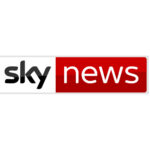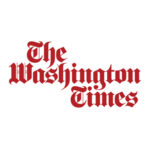|
Getting your Trinity Audio player ready...
|
INTELLIGENCE REPORT: Taking the Kidnapper Hostage: The Battle Over the Sovereignty of Lebanon
Information:
On Tuesday, July 25, 2017, United States President, Donald Trump, held a joint Press Conference with Lebanese Prime Minister, Sa’ad Uddin Al Hariri.
During that press conference, President Trump talked at length about Lebanese Hezbollah, describing it as a terror organization, presenting a severe threat to Lebanon, its people, and the entire region.
President Trump added that though Hezbollah pretends to serve Lebanon, the reality is – it serves its master – Iran.
President Trump also pledged that the United States will continue to assist Lebanon and make sure Lebanon will be the only factor defending Lebanon.
Analysis:
President Trump’s statement marks a significant milestone in the rebuilding of the balance-of-power in the Middle East.
Focusing on Hezbollah is a pinpoint punch at the cornerstone of Iran’s regional expansion mechanism.
Iranian Regional Expansion – Goals & Methodology
The goal of Iranian expansion, or as the Iranian Mullah calls it since 1979 – “Exporting the Islamic Revolution” – is to ensure that Iran is the dominant Superpower in the Middle East.
Exporting the Islamic Revolution and Iranian expansion is achieved through three major mechanisms:
- Diplomatic, commercial, and military relations with other states.
- Educational, charitable, and cultural activities – often used as shadow operations, money laundering mechanisms, or hidden channels which finance and operate terror cells around the world including Africa, the Arab Gulf Monarchies, South America, Israel, the Palestinian territories in the West Bank, and more.
- The most important and powerful mechanism of Iranian expansion efforts is the use of agents and proxies which are massively armed and financed by Iran.
The Agent / Proxy model has a clear pattern:
- Identify arenas of utmost strategic significance for Iran (preferably arenas that also have a significant Shi’ite population) which suffer from constant political instability and a weak government.
- Once such an arena is identified, Iran establishes and / or nurtures Agents / Proxies. There are two types of agents:
- The first type is agents Iran creates. Examples: The Lebanese Hezbollah; the Iraqi Hezbollah; Harakat al-Nujaba in Iraq; the Afghan Shi’ite militia Al Fatimiyoun; the Pakistan Shi’ite militia Liwa Zainebiyoun, the Palestinian Harakat as-Sabeeren Nasran li-Filastin in the Gaza Strip (for more on as-Sabereen please see my July 2016 Intelligence Report).
- The second type of agents are existing political factors which are not created by Iran – but identified as agents who can help Iran achieve its goals. Examples: Hamas and Islamic Jihad in Palestine (IJIP) in the Gaza Strip; the Houthis in Yemen.
In either case – whether it is establishing a new agent, or nurturing existing factors on the ground, Iran cultivates these proxies through supplying them with training, weapons, manpower, technical assistance, financial support, etc.- whatever it takes to ensure the agent’s loyalty and commitment.
Iran currently applies the above model in Iraq, Lebanon, Syria, the Gaza Strip, and Yemen. The difference between the two types of agents is the nature of their relationship with Iran:
- The agents of the first type, the ones which Iran creates – are subdued to Iranian instructions and execute Iran’s orders.
For example: Hezbollah – both the Lebanese and Iraqi, as well as Al Nujaba and Al Fatimiyoun and Zainebiyoun are fighting in Syria under the orders and direction of Iran. In fact, Iran created the Afghan Shi’ite militia Al Fatimiyoun, specifically to fight in Syria. - The agents of the second type, the factors which already exist – cooperate with Iran on the basis of mutually beneficial arrangements.
Here are some examples:
- Iranian military and financial support enabled Hamas to take over the Gaza Strip in 2007 and enabled Hamas to increase its attacks on Israeli cities. Hamas, in return, provided Iran with another base of influence off the Mediterranean (the other bases are Lebanon and Syria).
- In September 2014 Shi’ite Houthi tribes in Yemen – largely due to inner-Yemeni politics – conducted a military coup, ousting the legitimately elected government.
Following the coup, the Houthis – traditionally based in North Yemen, occupied Sana’a – Yemen’s capital, located in the center of Yemen. They also expanded their military presence into South Yemen to the shores the Indian Ocean.
Iran did not initiate the coup. However, once the Shi’ite Houthi tribes had executed the coup, Iran saw an opportunity to gain influence in a country which would be essential towards Iran’s hegemonic goals. Therefore, the Mullah supports the Houthis.
Supporting the Houthis provides Iran a base of influence on the shores of the Indian Ocean in proximity to Bab Al-Mandab Strait one of the most significant, strategic and sensitive spots on the planet.
The Strait of Bab al Mandab is located between Yemen and the Horn of Africa – one of the most strategically critical regions in the world.
The Strait is the chokepoint connecting the Red Sea with the Gulf of Aden and the Arabian Sea, and is a strategic link between the Mediterranean Sea and the Indian Ocean.
The Strait is a key strategic channel for commerce and trade – on a daily basis, almost all of the trade between the European Union and China, Japan, India and the rest of Asia passes through the Bab al-Mandab.
The Bab al Mandab Strait is one of the most strategic points on the planet. Whoever controls it, controls a major portion of the world’s economies, and has the ability to control, or strangle – much of the worlds commerce.
Having the Houthis as an armed agent is a valuable card for Iran for another substantial reason.
It enables Iran to threaten its biggest opponent – Saudi Arabia which borders Yemen to the north. That ability was demonstrated in a few missile attacks which the Houthis launched on Saudi Arabia. In one case – in October 2016, the Saudis announced they had successfully intercepted a missile shot by the Houthis which was aimed to target the city of Mecca – one of Islam’s three holy sites.
Since March 2015, a Saudi led military coalition has been fighting the Houthis.
Saudi Arabia wants to restore the rule of the ousted Yemenite government, and they want the Houthis to withdraw from all areas they have occupied since the coup.
Iran massively arms the Houthis, and therefore perpetuates the war and at the same time strengthens the Houthis (Iran’s) political bargaining position in a future political arrangement in Yemen.
Iran desires to establish a stronghold in Yemen and it is clear why. Supporting and nurturing the Houthis, provides Iran a valuable card to achieve its goal to be the dominant Superpower in the Middle East.
(For more on the war in Yemen, read for example my articles “Sixty-Six Egyptian Fishermen, Yemen and Instability in the Middle East” (October 2014) and Crisis in Yemen: Significant Milestone (March 2015).
On the one hand, using both types of agents – the agent Iran creates, and the agent Iran cultivates – allows the Mullah regime to expand its influence while keeping it hands clean. On the other hand, the effectiveness of both types of agents in the service of Iran has limits. Why?
Iran’s agents – whether created or cultivated – do not operate in a vacuum; they are part of the political, social, and economic fabric in the arenas in which they are based.
Most of Iran’s proxies are Shi’ites – and in most cases the environment they operate in is predominately Sunni. The relations between Sunnis and Shi’ites are tense, and hostility between the two intensifies when Iranian-Shi’ite armed proxies increase their activity and try to impose their agenda in the service of Iran in primarily Sunni environments. The inevitable outcome of Iranian-Shi’ite proxies trying to control, or impose Iran’s agenda, in a primarily Sunni environment is a Sunni counter-reaction and push-back, which varies in levels and intensity depending on the specific situation.
Therefore, Iran’s agents in the Gaza Strip, Iraq, Lebanon, Syria, and Yemen must take into consideration the political atmosphere and circumstances in the arena in which they function. The inevitable outcome, is that sometimes the agenda of Iran’s agents do not comply with Iranian interests – and sometimes even contradict Iran’s interests.
Here are two examples:
- Following the outbreak of the war in Syria, Hamas, a Sunni Palestinian group – and an important agent of Iran, distanced itself from Iran.
The reason for the separation was the fact that the Arab Sunni world – Hamas’ home and base of populist support – criticized Hamas for its alliance with the Iran-Assad axis which is responsible for the killing of hundreds of thousands of Syrian Sunnis (including as of now, more than 3,500 Palestinians in Syria).
Under the growing criticism, Hamas made a decision to distance itself from Iran. (For more on this issue, read my article The Alliance of Fear in Lebanon (June 2013).
- In Iraq, a very powerful and influential Shi’ite Iraqi cleric, politician, and military leader named Muqtada al Sadr is known to be closely affiliated with Iran. Al Sadr’s political party, the Sadrist Movement, has thirty-four members – out of a total of 328 – in the Iraqi Parliament, and he leads a powerful armed Shi’ite militia named Saraya al Salam (Companies of Peace).
Recently, as Iran has increased its involvement and influence in Iraq through the use of other Iraqi Shi’ite militias, al-Sadr changed his stripes and became a vocal opponent of Iran’s involvement in Iraq.
The reason for al Sadr’s change of heart is that al Sadr is an Iraqi-Arab, and he is concerned with Iran’s growing influence in Iraq.
In addition to his commitment to the well-being of his country, al-Sadr is close with one of the most – some say the most powerful and influential figure in Iraq – Ayatollah ‘Ozmaa (the Grand Ayatollah – the highest rank within the Shi’ite clergy hierarchy) ‘Ali al-Sistani, who is of Iranian origin, yet lives in Iraq since 1951 and is considered the highest spiritual religious authority for Iraqi Shi’ites. Similar to al-Sadr, al-Sistani strongly opposes Iran’s growing influence in Iraq and emphasizes that Iraqi political and national integrity must be kept and protected.
Saudi Arabia, Iran’s bitter opponent, rushed to take advantage of al-Sadr’s change of heart. On July 2017, Al Sadr – once a bitter opponent of Saudi Arabia, visited Saudi Arabia and met Saudi Crown Prince Mohammad Bin Salman Al Saud. It was al-Sadr’s first visit to Saudi Arabia after 11 years.
Therefore, as stated – using agents has a limited effectiveness.
Lebanese Hezbollah – Iran’s most important agent
In the beginning of the 1980’s in Lebanon – to the north of Israel, the Iranians – through their Al-Quds elite force, established what will become their most powerful proxy, the Shi’ite Lebanese militant Islam organization Hezbollah (the Party of Allah).
The Iranians identified and capitalized on the fact that the Shi’ites are the largest sect in Lebanon – over a quarter of the population, that Lebanon suffers from chronic political instability, and that Israel occupied parts of Lebanon from 1982-2000.
Iran provides Hezbollah with many hundreds of millions of dollars; supplies them with the most advanced military training; and massive amounts of technologically advanced weapons – including, according to estimations, more than one hundred thousand rockets and missiles which are aimed at Israel.
The massive investment Iran has made in Hezbollah has paid off very well for the Mullah regime. Hezbollah has become Iran’s most valuable agent.
Under Iran’s direction, Hezbollah kidnapped Lebanon in the most simple and effective way – terror and the use of brutal force. By kidnapping Lebanon, Hezbollah provides Iran a strategic base on the shores of the Mediterranean – also bordering Israel, which the Mullah regime vows to eliminate.
In many articles I have published, I have described the strategy and mechanisms which enabled Iran to take over Lebanon by remote control through using its most powerful agent – Hezbollah – to that end. (See links to some of these articles in the end of the report).
Here are few reminders:
- Hezbollah is suspected of having executed the 2005 assassination in Beirut of Rafiq al-Hariri, then Prime Minister of Lebanon (the father of the current Lebanese Prime Minister, Sa’ad Uddin al-Hariri), who was a bitter opponent of the Assad-Iran, axis and a close friend of the Saudi Monarchy. The assassination was likely ordered by Assad and Iran. An International Tribunal established by the United Nations Security Council (STL) to investigate the assassination, demanded that senior Hezbollah Commanders suspected of orchestrating the assassination be questioned by the Tribunal. As of today – over a decade later, Hezbollah still refuses to comply with the demand. Intimidated by Hezbollah, all Lebanese governments formed since the assassination, claim that they have no information regarding the suspects’ whereabouts. Al-Hariri was one victim in a long list of Lebanese public figures – journalists, politicians, judges, law enforcement officials, and others – who were assassinated or injured by Hezbollah.
- In May 2008, Hezbollah violently occupied large parts of Beirut using military force. The reason for Hezbollah’s siege – during which, dozens of Lebanese were killed – was the fact that the Lebanese government would not allow Hezbollah to deploy its own independent advanced communication systems – provided by Iran, in Beirut. The Lebanese government refused to back down, so Hezbollah simply used its weapons to impose its (Iran’s) will, and at the same time send a clear message: The real boss in Lebanon is Hezbollah and to be more specific – Iran.
- Hezbollah’s stronghold is in south Beirut known as “Al-Dahya Al-Janoubiya” (“The Southern Quarter”) is inaccessible to Lebanese State authorities. Hezbollah secures the area and rules it. (For more on that issue please read my 2012 article “Inside Hezbollah’s Private Dominion”).
- For all intents and purposes Hezbollah controls the Beirut International Airport. Hezbollah has access to Passport Control, the warehouses, and the cargo and baggage storage areas. Reportedly, Hezbollah stores weapon and ammunition in the airport.
- Lebanon is the base for Hezbollah’s world-wide narcotic and drug network – a major source of income for the organization. The network is out of reach of Lebanese law enforcement agencies.
Hezbollah is Iran’s main strategic asset in the Middle East.
Hezbollah has become the cornerstone in Iran’s structure of regional agents.
Hezbollah operates terror cells in the Palestinian territories, the Arab Gulf states, the West Bank, and Israel.
Hezbollah is a military mentor, and a role model to other Iranian agents such as Hamas, Islamic Jihad in Palestine, the Houthis in Yemen, etc.
Hezbollah’s crucial importance to the Mullah regime is evident in the case of the war in Syria.
The Iranian regime’s most important ally is the Assad regime in Syria.
Without Assad – the land bridge that serves as a passage for weapons, ammunition, and militants from Iran to Lebanon and Syria and back would be severed. Hezbollah, based in Lebanon, would find itself cut off. Moreover, the regime would likely find itself facing a new rule in Syria that will be Sunni and will not forget that Hezbollah was Assad’s close ally.
Syria’s location and the ability of Iran to dictate the course of events in Syria is crucial to Iran’s hegemonic goal of being the Superpower in the Middle East. Syria is a lynchpin to the web of agents and proxies the Iranian regime has built and nurtured which put a noose around Israel’s neck. A friendly Syria is critical to one of the Mullah regime’s most important projects – the Iranian controlled corridor the Iran has been methodically and strategically building from Iran to the Mediterranean Sea.
In the eyes of the Iranian regime the fall of Assad’s government would be an enormous strategic blow. It would deprive Iran’s one of its most significant strategic and powerful cards.
In the fall of 2011, it seemed the Syrian rebel forces were gaining the upper hand. and Assad’s days were numbered. Alarm bells went off in Teheran, and Iran ordered Hezbollah to send its forces into Syria to save the regime and Assad himself.
From the outset of the Syrian conflict in 2011, the Lebanese government officially declared neutrality in the conflict. Hezbollah has been a part of the Lebanese government since 2009.
In spite of the fact that Hezbollah is a member of the Lebanese government which had formally declared neutrality in the conflict, Hezbollah ignored the Lebanese government’s policy and complied with Iran’s order. Hezbollah went to Syria to fight to secures Assad’s rule in Syria and to ensure Iran’s dominance in the region.
Hezbollah fighting in Syria to secure Assad’s rule dragged Lebanon into the Syrian whirlpool:
- Hezbollah’s engagement in the war on the side of Assad resulted in Syrian rebel groups and Sunni Salafi–Jihadi groups attacking and battling Hezbollah forces near the Lebanese-Syrian border. In some cases, the Lebanese army was dragged into the fight – Lebanese soldiers have been killed and others taken captive.
- Salafi-Jihadi factors inside Lebanon (mostly Palestinians), looking to avenge Hezbollah for its involvement in the war in Syria (it is estimated more than 3,500 Palestinians have been killed thus far in the war in Syria) initiated attacks – the shooting of rockets, suicide bombers, etc. on Hezbollah’s stronghold – Al-Dahya Al-Janoubiya, in Beirut as well as against Shi’ite communities in Lebanon, resulting in the killing of dozens of Lebanese civilians.
- Tensions between Sunnis and Shi’ites in Lebanon have increased substantially, manifested in the eruption of violence in major Lebanese cities such as Tripoli and Sidon.
- Over 11 million Syrians have been displaced due to the war in Syria. Over 1.5 million have fled to Lebanon. Many of these people’s villages and towns have been destroyed by none other than Hezbollah militants.
- Lebanon, per capita, hosts the largest numbers of refugees per capita in the world – hosting all these people in refugee camps inside Lebanon is a huge burden on the fragile Lebanese economy.
Hezbollah’s military capacity is crucial for Iran to achieve it expansionist vision. Hezbollah is a critical tool to expand Iran’s influence through the establishment and maintenance of the Iranian land corridor which goes from Iran, through Iraq, Syria, and Lebanon to the Mediterranean Sea – a plan which is in the Mullah regime’s words is “vital for Iran’s strategic interest and national security” and a critical step towards attaining Iran’s goal of becoming the leading regional Superpower. (For more on that matter read my January 2017 article “A Growing Whirlpool of Violence: The Middle East Legacy of Barack Obama.”)
It is no wonder then, that Hezbollah views itself as a regional power – and acts as such.
Hezbollah’s leader, Hasan Nasrallah, openly threatens Arab Gulf Monarchies and threatens Israel. In a speech at the end of June 2017, Nasrallah announced that in the next war with Israel thousands of Shi’ite militants from all over the world will come to Lebanon to fight Israel.
The Lebanese government (of which Hezbollah is a member) as well as public opinion, expressed discontent with Nasrallah’s statement.
Nasrallah couldn’t care less.
The interests of the Lebanese people, and the sovereignty of Lebanon – as far as he is concerned – are simply irrelevant. It has been proven time and time again.
Here are few examples:
- Following the war with Israel, initiated by Hezbollah in 2006, the United Nations Security Council issued United Nations Security Council Resolution 1701.
UN Security Council Resolution 1701 ordered the deployment of the Lebanese army in South Lebanon and along the borders with Israel. The resolution also ordered that Hezbollah have no formal presence in South Lebanon.
As a fact, during that decade, Hezbollah substantially boosted its military presence in South Lebanon – building military bases, headquarters, bunkers, along with weapons and ammunition storages in many villages and towns in South Lebanon. That massive activity was disguised as civil work.
As Hezbollah’s self-confidence grew, the organization did not bother to disguise the fact that it violates the UN Security Council resolution and dismisses the Lebanese government sovereignty.
- In April 2017, Hezbollah’s spokesman dressed in the Hezbollah uniform, briefed foreign media next to the border with Israel.
In June 2017, the head of Israeli Military Intelligence announced that Hezbollah had deployed surveillance towers along the Israeli-Lebanese border, disguised as “environmental watch towers” allegedly operated by an environmental non-profit organization.
Openly and in broad day light, Hezbollah defies Resolution 1701, making it clear that Hezbollah – not the Lebanese government – is the real sovereign in Lebanon.
- On July 21, 2017 Hezbollah launched a military campaign in the area of Jaroud ‘Arasl, along the Syrian–Lebanese border.
In the weeks leading up to the attack, Hezbollah aggressively promoted the narrative to the Lebanese public that Hezbollah was preparing for a crucial, fierce fight on Lebanon’s eastern border, allegedly aiming “To root out ISIS militants’ headquarters and bases of the terrorists built during the last six year threatening Lebanon.”
Ten days after it was launched, the campaign came to a quick end, with a cease-fire agreement signed between Hezbollah and Hayhat Ahrar Al Sham, a coalition of Sunni Salafi-Jihadi groups operating mostly in northern Syria – who have a smaller presence along the (eastern) border with Lebanon. ISIS, by the way, has a negligible presence along Lebanon’s (eastern) border with Syria.
As a matter of fact, the military campaign was mostly a PR move by Hezbollah – Hezbollah’s media platforms published TV reports, video clips, and footage showing Hezbollah fighters in action waving both the flags of Hezbollah and of Lebanon. It was an attempt by an organization increasingly loathed in Lebanon and across the Arab world – due to the blood on their hands from doing Iran’s bidding, to present itself as Lebanon’s savior and defender – and thus, restore its declining image.
Yet, is seemed that many Lebanese were not impressed with Hezbollah’s efforts.
On the July 27, 2017 episode of DNA (click here for video in Arabic), Lebanese Shi’ite journalist, political analyst, and political satirist, Nadim Koteich mocks Hezbollah’s staged campaign in ‘Arsal. Koteich compared Hezbollah’s rhetoric and PR during the weeks leading up to the military campaign in which they showed “the headquarters and bases of the terrorists in ‘Arsal, and what was presented during the military campaign by no other than Hezbollah’s TV reporters as “amazing achievements” of the military campaign – to the, as Koteich put it, “remains of bird hair, a hole carved in the ground, and a black cloth which allegedly “belonged to the leader of the terrorists” which the organization displayed in their video documenting the campaign’s “achievements.”.
Following the alleged “amazing and heroic victory over the terrorists” – Hezbollah’s leader, Hassan Nasrallah, announced that should the Lebanese army ask – and then demonstrate that it has the capacity to take over the control – Hezbollah will gladly hand over control to the Lebanese army over the areas Hezbollah had “freed” in the June military campaign.
Hezbollah’s tactic was to present itself not only as the savior of Lebanon, but also the defender of the Lebanese army.
Nasrallah’s patronizing rhetoric, combined with reports suggesting that the Lebanese army had supported Hezbollah in the ‘Arsal campaign, further increases anxiety and resentment among many Lebanese towards Hezbollah.
Lebanon suffers severe political, economic, and social challenges. The Lebanese people view their army as a uniting symbol – perhaps the only one left – untouched by narrow political and ethnic interests. Should the army be viewed as a subcontractor in the service of a political party, (let alone, Hezbollah) that will likely be the straw that breaks the camel’s back. The Lebanese army includes soldiers from all ethnic groups in Lebanon. The percolation of political tensions between various Lebanese ethnic groups into the army could result in the disintegration of the army. From there – the road to a bloody civil war is short.
It is no wonder then, that the Lebanese Prime Minister, Sa’ad Uddin Al Hariri, as well as the Lebanese Chief-of- Staff, rushed to deny that the army supported Hezbollah’s military campaign.
And there is another reason for Lebanese leadership’s denial of cooperation of the Lebanese army and Hezbollah.
Western powers, including the United States, are interested in strengthening the Lebanese army in order to resuscitate Lebanon’s sovereignty. That support will be jeopardized if the United States, the United Kingdom, and France conclude that Hezbollah is now taking over the Lebanese army as well.
These developments in Lebanon were the backdrop for the visit of the Lebanese Prime Minister, Sa’ad Uddin Al Hariri, to the United States.
In briefings he gave in open forums during his July 2017 visit to the US, the Lebanese Prime Minister was quoted as explicitly expressing “Distaste with the idea that Tehran is pushing to expand its regional influence through a so-called “Shia Crescent” of militias across otherwise Sunni-dominated territory.” He criticized the push by some US lawmakers to craft new sanctions against Hezbollah. “Sloppily written sanctions,” he said, “could inflict unwarranted damage on Lebanon’s economy, when what is actually needed is more effective enforcement of existing sanctions.”
Though seemingly defending Hezbollah in these statements, al-Hariri actually trapped Hezbollah in a corner.
By sending a message that he is the only buffer standing between Hezbollah and tougher US sanctions, al-Hariri gains a leverage card on Hezbollah.
President Trump’s statement during the July 25 joint Press Conference must be viewed in the larger strategic, and seemingly well-calculated, US- Saudi moves aimed at thwarting Iran’s aggressive expansion plan.
Israel is deeply (and rightly) concerned with Iran’s expansion plan, as well as Hezbollah’s advanced military capacities (On that read for example my January 2015 article A Significant Message). In August 2017, Yossi Cohen, the head of the Israeli Mossad – one of Israel’s Intelligence agencies, indicated the growing threat Iran and its agents present to the Middle East and Israel. One can assume Israel has a significant role in the US-Saudi strategy to block Iran’s expansion plans.
The precursor for the joint US-Saudi strategic plan was President Trump’s remarks during his visit to Saudi Arabia in March 2017, at which time he also defined – and rightly so – Hezbollah, as a terror organization just like ISIS al-Qaeda and Hamas.
In July 2017, and again in August 2017, the United States Ambassador to the United Nations, Nikki Haley, declared that Hezbollah is alarmingly increasing its military capacities and she demands the UN Security Council move to strictly restrain Hezbollah and stop shipments of weapons to the terror group.
At the same time, the largest warship in the world, the US Aircraft Carrier G.W. Bush, is harbored off-shore of the Israeli coast city of Haifa – a stone’s throw from Lebanese shores.
The message is clear.
President Trump’s statement in the joint press conference emphasizes that the US is pledged to Lebanon’s sovereignty. The meaning is that al-Hariri’s government now has a US canopy.
Thus, Hezbollah’s almost unchallenged ability to dictate Lebanon’s domestic and foreign policy is now significantly diminished. Arab analysts say that Trump’s statement in Washington was music to al-Hariri’s ears.
Iran understands that development – and is concerned.
Two days after President Trump’s statement, Iran launched a missile which – according to the regime, can place a satellite in orbit. Though described by Iran as successful test, US officials argue the launch was “a catastrophic failure” as the missile blew up shortly after launch.
The timing of the launch, two days after the joint press conference and Trump’s statement, was Iran’s way of signaling that it will not give up its hold on Lebanon.
Iran’s response did not take place in Lebanon – and for good reason. Should Hezbollah make a move in Lebanon, putting Trump’s statement to the test, it risks a painful US reaction.
The sanctions which had been increasingly imposed on Iran by the international community – particularly the 2006 UN Security Council passed Resolution 1696 regarding Iran’s nuclear program, coupled with Iran’s struggling economy (partially due to the sanctions), compromised the regime’s ability to fund Hezbollah. Under the Hezbollah International Financing Prevention Act of 2014, Hezbollah, as a designated terrorist organization, has also been the subject of sanctions. The diminishing Iranian support, coupled with the sanctions are painful to Hezbollah. Reportedly, the sanctions have forced Hezbollah to cut payments to its militants, to cut budgets for social and educational activities, and to reduce the monthly payment for the families of Hezbollah militants killed and wounded in Syria. According other reports, due the growing financial pressure, Hezbollah is looking to sell assets it owns in Lebanon – land, buildings, companies, etc., in order to improve its cash flow.
However, should Hezbollah put President Trump’s statement to the test, tougher financial sanctions will not the only painful reaction Hezbollah risks.
Hezbollah remembers that President Trump proved he does not hesitate to use military power to send messages:
In April 2017, the United States attacked Assad’s Air Force base following the use of chemical weapons.
In June 2017, the United States attacked Assad’s forces and Iraqi Shi’ite militias in the area of the Iraqi–Syrian-Jordanian borders, which was defined by the US as a non-military zone. (On that watch my July 2, 2017 video briefing “Latest US Moves in the Middle East.”)
Al-Hariri went back to Lebanon at the end of July 2017 sheltered with a US umbrella. This strengthened his political power at the expense of Hezbollah.
And it did not take long for the change to be evident.
In August 2017, three Lebanese Shi’ite Ministers, two Ministers of the Amal Shi’ite Movement and one Hezbollah Minister, announced they intended to go to Syria to meet with President Assad to discuss “matters of mutual interest to Lebanon and Syria.”
That move, seemingly unrelated to the Trump-Hariri meeting, in in fact, a move aimed to challenge al-Hariri’s political strength, yet without putting Trump’s statement to the test.
Al-Hariri rose to the challenge and rushed to announce that such trip is an “private visit that was not discussed by the Lebanese government who is determined to keep neutrality in the context of the war in Syria”.
The subtext of Al-Hariri’s statement is “The Lebanese government does not view Assad as legitimate partner, and thus does not subdue its (Lebanon’s) policy to Iranian dictating”.
Prediction:
Following the meeting of President Trump and Prime Minister Al-Hariri, the balance of power in Lebanon has somewhat changed.
Hezbollah’s unchallenged ability to dictate its (Iran’s) will on Lebanon is now seriously diminished.
Figuratively speaking – the kidnapper has in a way become the hostage.
That is why President Trump’s statement marks a significant milestone in the complex, delicate, and winding process of rebuilding the balance of power in the Middle East.
President Trump’s statement will likely result in the strengthening of the Lebanese government, and Lebanon’s sovereignty, at the expense of Hezbollah.
Thus, I anticipate that in the near future, the Lebanese government will make moves to demonstrate their sovereignty.
Potential moves could be removing Hezbollah’s surveillance towers in South Lebanon and strengthening the presence of the Lebanese army in South Lebanon. In my evaluation, Hezbollah will tolerate such moves.
However, the change in the balance of power in Lebanese politics will lead to a real test case – and that might not be so far away.
In my evaluation, it is very possible the real test will be the UN Special Tribunal (STL) investigating the assassination of Lebanese Prime Minister Rafiq Al Hariri.
One should remember that the STL operates under Article 7 of the UN Security Council Charter. The meaning of that is – if the Lebanese government fails to comply with the STL demands, Lebanon could face military sanctions. In that context, it should be noted that the Tribunal spokeswoman, Wajed Ramadan, who by the way, is Lebanese, announced in March 2017 that the Tribunal investigation has reached its third and last stage.
It is possible then, that over the next few months, the STL will renew its demand that Hezbollah senior commanders suspected of being involved in the assassination appear before the STL and be questioned by the Tribunal.
The Lebanese government will demand Hezbollah to turn in his people to STL investigation.
That scenario will present Hezbollah with a serious dilemma.
On the one hand, refusing to comply with the demand will put Hezbollah on a collision track with the Lebanese government.
Prior to President Trump’s statement, such a scenario would not have bothered Hezbollah. They would just need to threaten to use violence to make the Lebanese government back down.
After President Trump’s statement, it is a totally different ball game.
Hezbollah knows that if it threatens – let alone uses – violence to make the Lebanese government refuse STL’s demands, it risks massive military response on the part of the United States backed by the UN Security Council.
On the other hand, complying with the Lebanese government’s demand to turn in its own people, marks a serious defeat of Hezbollah and indicates weakness. For Hezbollah, who bases its control over Lebanon through terrorizing and using its armed power, that is a disturbing precedent, which could lead to a further weakening of its position.
If I were one of Hezbollah’s commanders wanted for questioning by the STL, I would be very worried right now. Not because of the STL, but because Hezbollah could bypass that dilemma. One cannot investigate dead people.
Lebanon is a state that suffers constant inner-tensions, which translates into political instability and violence.
Having been kidnapped by Hezbollah in the service of Iran, deepened Lebanon’s illness and challenges.
Lebanon is on a slippery slope, inevitably seeming to lead to massive turbulence inside Lebanon. In March 2017, al-Hariri said: “Lebanon is on the brink of abyss”.
In a way, President Trump’s statement accelerates Lebanon’s motion towards the upcoming turbulence.
Ironically and tragically, massive turbulence inside Lebanon might be Lebanon’s last chance to resuscitate its sovereignty.
***END INTELLIGENCE REPORT***
Click Here To Download a PDF of this Intelligence Report
If you want to have a better understanding of the news and what really drives the unfolding events…
Read the latest book of Avi Melamed,
INSIDE THE MIDDLE EAST | ENTERING A NEW ERA, available now >>>
Follow me on Twitter @AviMelamed; Facebook @InsideTheMiddleEast; for more Videos on YouTube https://www.youtube.com/c/AviMelamed
I can always be reached at Av*@********ed.com
































































